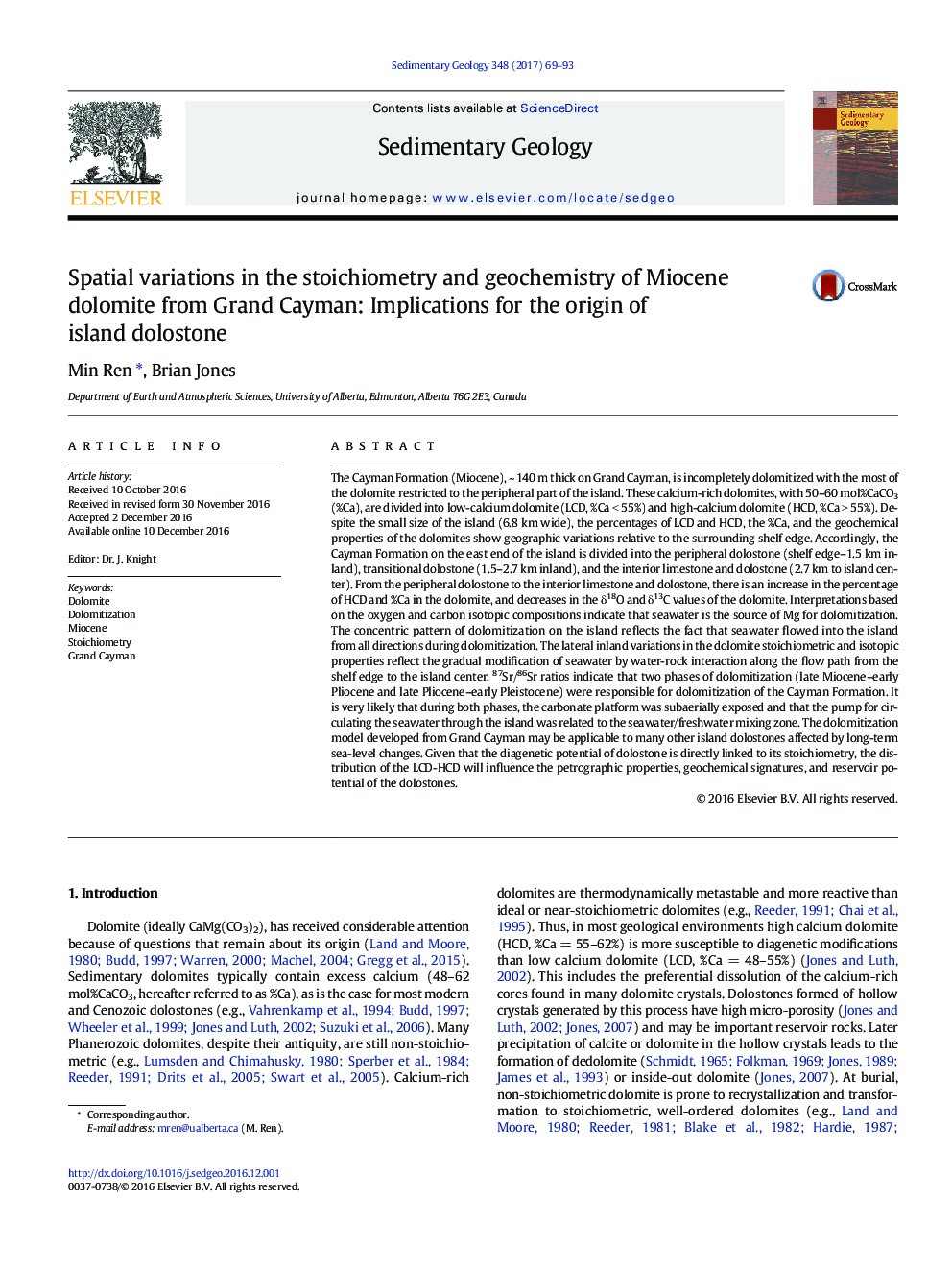| کد مقاله | کد نشریه | سال انتشار | مقاله انگلیسی | نسخه تمام متن |
|---|---|---|---|---|
| 5781431 | 1636015 | 2017 | 25 صفحه PDF | دانلود رایگان |
The Cayman Formation (Miocene), ~ 140 m thick on Grand Cayman, is incompletely dolomitized with the most of the dolomite restricted to the peripheral part of the island. These calcium-rich dolomites, with 50-60 mol%CaCO3 (%Ca), are divided into low-calcium dolomite (LCD, %Ca < 55%) and high-calcium dolomite (HCD, %Ca > 55%). Despite the small size of the island (6.8 km wide), the percentages of LCD and HCD, the %Ca, and the geochemical properties of the dolomites show geographic variations relative to the surrounding shelf edge. Accordingly, the Cayman Formation on the east end of the island is divided into the peripheral dolostone (shelf edge-1.5 km inland), transitional dolostone (1.5-2.7 km inland), and the interior limestone and dolostone (2.7 km to island center). From the peripheral dolostone to the interior limestone and dolostone, there is an increase in the percentage of HCD and %Ca in the dolomite, and decreases in the δ18O and δ13C values of the dolomite. Interpretations based on the oxygen and carbon isotopic compositions indicate that seawater is the source of Mg for dolomitization. The concentric pattern of dolomitization on the island reflects the fact that seawater flowed into the island from all directions during dolomitization. The lateral inland variations in the dolomite stoichiometric and isotopic properties reflect the gradual modification of seawater by water-rock interaction along the flow path from the shelf edge to the island center. 87Sr/86Sr ratios indicate that two phases of dolomitization (late Miocene-early Pliocene and late Pliocene-early Pleistocene) were responsible for dolomitization of the Cayman Formation. It is very likely that during both phases, the carbonate platform was subaerially exposed and that the pump for circulating the seawater through the island was related to the seawater/freshwater mixing zone. The dolomitization model developed from Grand Cayman may be applicable to many other island dolostones affected by long-term sea-level changes. Given that the diagenetic potential of dolostone is directly linked to its stoichiometry, the distribution of the LCD-HCD will influence the petrographic properties, geochemical signatures, and reservoir potential of the dolostones.
Journal: Sedimentary Geology - Volume 348, 1 March 2017, Pages 69-93
